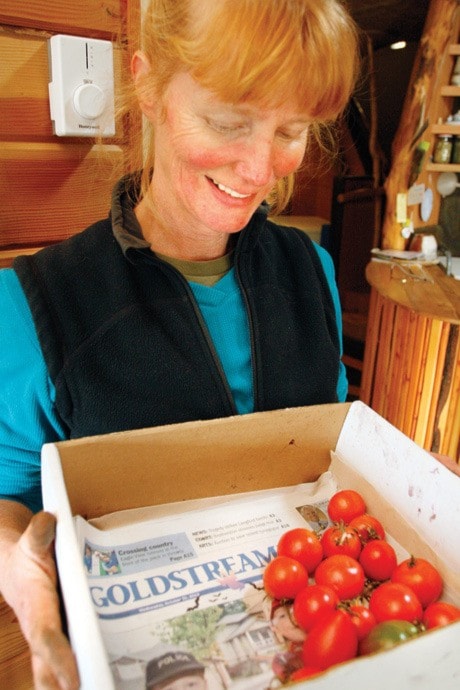Ann Baird and her family live life as green as possible.
They built the first code-approved seismically engineered cob house in North America.
The Highlands home also functions with solar power, collected rainwater and compostable toilets.
The no-flush option looks similar to a toilet except instead of a toilet bowl full of water, a bucket collects the waste. And instead of flushing, each user drops a handful of wood shavings in the bucket.
“Shredded newspaper would work well instead of the wood chips,” Baird said.
Each week the family’s waste buckets are dumped into the compost pile that is carefully monitored with a thermometer. The mound of organic matter doesn’t emit a foul smell.
“It decomposes so quickly it doesn’t rot,” Baird explained.
To keep the heat in, the compost heap is covered with straw, but Baird explains newspaper would also make a good cover.
“Newspaper can also be put right into the compost pile,” she said. “If you burn it it just goes right up into the atmosphere, if you recycle it turns into other products, but if you compost it, it turns back into earth.”
When composting human and kitchen waste together, Baird explained the compost pile is rich in nitrogen and needs to be balanced out with carbon. The carbon comes from the newspaper.
Goldstream News Gazette lines boxes of ripening tomatoes in Baird’s pantry.
“One tomato always goes gross and rots, this way I just have to change the newspaper and I get to keep the box,” Baird said explaining the newspaper covered with goo then goes in the compost.
One for the animials
One place that is always welcoming copies of the Goldstream News Gazette is the Wild Animal Rehabilitation Centre in Metchosin.
After the newspapers are read cover to cover, they end up lining bird cages. Pigeons, robins, sparrows and thrushes enjoy a birds eye view of the paper.
The bottoms of the cages are mesh wire and the bird dropping fall onto the newspapers underneath.
“It’s not good for them to sit directly on the newspaper,” said Kari Marks, Wild ARC manager. Bird poop makes the paper slippery,” she explained.
With the newspaper being in a little tray underneath the cages, “It’s easy for us to crumple up and dispose the newspapers,” she added.
Wild ARC also uses shredded newspapers in the worm compost bins.
Donated newspapers are always appreciated at Wild ARC. To donate your old newspapers call Marks at 250-478-9453.
Did you know?
n Old Gazettes can be used to make a lasagna garden by layering items such as grass clippings, newspapers, leaves and compost.
